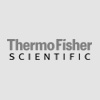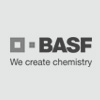Overview of Recombinant Expression Systems
The advent of modern biotechnology has allowed for the optimization of production and extraction processes of bioactive molecules by expanding on the available organisms to be used as expression systems. Since the development of genetic engineering techniques that enabled the construction of recombinant organisms, production of heterologous proteins in cheaper, safer, and more manageable host cells has become a widespread practice in the industrial, food, and pharmaceutical fields. Because the specific protein of interest has specific characteristics that make certain systems more preferable, the proper selection of an organism for its optimal expression needs to take in account several parameters. Although the characterization of recombinant protein expression systems is far from complete, several of them have been far more studied and implemented, ranging from simple bacteria to complete multicellular organisms.
Prokaryotic Systems
Prokaryotes are, perhaps, the organisms most widely associated to the use of genetic engineering for production of specific biomolecules. They represent an ideal expression system in terms of their ease and low cost of culture maintenance, even in continuous operation, and their high growth rates. Because they can be grown in simple media, successful recombinant protein production in bacteria is usually a very cost-effective process.
The expression of foreign protein molecules in prokaryotic systems is a process with inherent differences from the protein's source organism. Naturally, these microorganisms are not able to carry out post-translational modifications on the protein product. These include molecule glycosylation, phosphorylation, acylation, methylation and addition of other chemical groups, as well as addition or cleavage of peptide units, chemical modification of amino acid residues, and formation of disulfide bridges. Since proteins from higher organisms might require such modifications for their adequate folding and performance of their function, their absence in a prokaryotic system might have a profound influence on their structure and activity, as well as their stability, resistance to degradation and even solubility on different media1.
Another phenomenon to be considered is the need of certain proteins for chaperon molecules in order for their correct folding to be possible. The inability to achieve a correct structure, besides affecting function, may result in a radical change in the molecule's solubility that results in the formation of inclusion bodies. Although their formation has been exploited, largely because it protects the product from proteolytic degradation and may enhance subsequent purification2, inclusion bodies require solubilization steps3, and the cell disruption required to extract the misfolded product also releases cytoplasmic components that become contaminants and constrain the purity levels that may be achieved4. Approaches to overcome their formation include the coexpression of chaperones5, as well as using flexible promoters that avoid a high rate of expression that may induce their formation6.
Problems might even be encountered on the amino acid sequence itself. Bacterial protein synthesis is initiated using the amino acid N-formylmethionine instead of the methionine found in higher organisms. Its presence can interfere with the protein's structure, besides eliciting an immune response if the product is to be used for medical purposes7.
Perhaps the greatest trans-domain boundary presented when introducing foreign nucleotide sequences into prokaryotes is codon bias. The usage of nucleotide triplets whose corresponding tRNA's availability in the host cell is radically different may result in reduced expression8. Even when a product is being properly translated and folded, proteases present in the cell may modify the protein or completely degrade it, resulting in reduced or absent expression9.
E. coli is a well-characterized and widely implemented expression system. Numerous variations and applications are available commercially, including the pET expression system that comprises a range of hybrid promoters and multiple cloning sites for fusion proteins, and the pBAD system based on controlled inducible expression with L-arabinose10.
A major setback when using E. coli is its lack of ability for secretion of proteins. Secretion of products is usually preferred as, besides reducing the rate of degradation, it makes collection and purification of the protein of interest far easier, as it can be done directly from the cell medium and reduces the risk of releasing potentially harmful intracellular molecules, like lipopolysaccharides and other endotoxins. However, secretion of heterologous proteins is usually limited to the periplasm and does not reach the extracellular space11.
Product purification and concentration can be, even so, greatly eased by expressing fusion proteins, where the target gene is fused to nucleotide sequences that are translated into short functional peptides, or 'tags'. Affinity tags, for example, facilitate downstream product recovery12. Fusion with reporter molecules allows for detection and characterization of the protein of interest13. Fusion products can also be used to confer the protein a greater resistance to proteases14.
Problems with product-host compatibility can be addressed using strains developed to target specific expression obstacles. Manipulation of the abundance of specific tRNA molecules in the bacterial cell has enabled the use of nucleotide sequences in hosts with very different codon frequencies from the gene's source organism15, an approach that can be used when the synthesis of codon-optimized DNA molecules is not an option. E. coli strains deficient in certain proteases decrease the probability of degradation of recombinant protein products16.
Multiple strategies aim to adapt certain E. coli strains by introducing other modification abilities through genetic engineering. Attempts at generating an E. coli strain capable of mimicking eukaryotic glycosylation patterns have recently been performed17. Improvements on its secretion capacity are also under study18.
An alternative prokaryotic expression system is Bacillus subtilis, which shares many of the desirable growth and production characteristics of E. coli, but displays some different properties. A noteworthy distinction is its ability to naturally become competent for transformation with foreign nucleic acids19. This soil-dwelling microorganism does not produce lipopolysaccharides, preventing the risk of toxins being present with the final product. Its genetics are also well-characterized, with many techniques developed for its manipulation, with the added value of being able to secrete proteins into the extracellular medium20.
The entire genome of B. subtilis has been sequenced, and its widespread use as an expression system has allowed for great amounts of information on its ability to produce recombinant proteins to be generated. Some major disadvantages include the reduced stability of certain plasmids in the cell21, and degradation of products by both intracellular and extracellular proteases22.
Alternative prokaryotic expression systems include species in the genera Staphylococcus23, Pseudomonas24, Lactobacillus25, Streptomyces26, Rhodobacter27, and Ralstonia28, among others.
Eukaryotic Systems
Yeasts provide an excellent expression system that shares the prokaryotes' potential for large-scale culture thanks to cheap and simple incubation conditions, as well as high growth rates, and yet displays biological characteristics unique to eukaryotes that enable the production of proteins requiring certain biochemical processes not offered by bacteria. Because they are, indeed, eukaryotes, yeasts hold a much greater potential to correctly fold and modify proteins in a manner similar to that undergone in the gene of interest's source organism. They are quite capable of secreting intracellular proteins into their culture medium, and they are also free of endotoxins, should their cells need to be ruptured. They pose an approach to eukaryotic gene expression with much more ease of culture and genetic engineering than other eukaryotes.
Saccharomyces cerevisiae represents a fermentation system that leapt from the age-old bread and wine-making process onto recent vaccine production29,30. Other yeasts also used for recombinant protein expression include Pichia pastoris, Schizosaccharomyces pombe, Arxula adeninivorans, Hansenula polymorpha, Kluyveromyces lactis, and Yarrowia lipolytica31,32,33, among others.
Although many of the processes involved in gene expression are shared between yeasts and higher eukaryotes, correct glycosylation remains a widespread problem when using them as expression systems. The glycosylation patterns exhibited by yeasts differ substantially from those of mammals, for example34. Approaches toward the humanization of glycosylation patterns in modified yeast strains have already been developed35,36.
Transformation strategies in yeasts enable the integration of nucleotide sequences into their genome, which may result in increased genetic stability, insertion of longer DNA molecules, and expression of different peptides, as even transformation with multiple plasmids can be done38. Various strong promoters are available for gene expression in yeasts. Although less common than in prokaryotes, inclusion bodies can also be formed, especially in instances of high-level protein production, as in P. pastoris38.
Like their unicellular counterparts, filamentous fungi can also be used for recombinant protein production. Although they are recognized as a system capable of high levels of protein secretion, the pathways involved are far less studied than in yeasts. Several members of the genera Aspergillus, Trichoderma, Chrysosporium, and Fusarium are recognized as viable expression systems39, but general obstacles in expression in conventional culture have led to alternative techniques for protein production, like solid-state culture40.
Insect cells are another non-fungal eukaryotic alternative. Although this system's transformation method is based on viral infection, the species-specific baculovirus is considered safe for vertebrate organisms41. By inserting the gene of interest into the viral vector, it is possible to transfect insect cell lines or complete insect organisms. This system has been acknowledged as having relatively high yields and being very capable for producing glycosylated products42. Its potential for post-translational modification and lack of toxic compounds in the host cell make it an attractive system even for therapeutic applications43.
Due to the lytic nature of baculovirus infection44, continuous expression is not possible. Thus, the production of protein requires successive rounds of insect cell infection and a limited production time. Another impediment is the lesser but still present difference in glycosylation patterns between insect and mammalian cells, although there have also been approaches to the problem by generating insect cell lines with humanized glycosylation capabilities45.
Mammalian cells provide, undoubtedly, the ultimate protein expression system, in terms of appropriate modification, folding, and transport of proteins, especially those intended for human use. However, their culture requires more specialized techniques and care, the strategies required for higher yields are more complex, and their genetic manipulation is far more complicated.
Transient expression of the target protein can be achieved by transfection with foreign DNA in a vector that allows for unlimited replication of the molecule in the host cell. A rapidly replicating vector will result in the translation of numerous protein molecules in a relatively short time. However, the cell ultimately dies, which makes the system unable to perform continuous production. A widely used transient expression system is the COS TES, where the CV-1 monkey cell line is transfected with SV40, and the viral DNA is replicated uncontrollably by cellular polymerases, leading to high production but ultimate cellular death46. It is possible to achieve the stable expression of a protein of interest by introducing the genetic material into a chromosome in the cell's genome. Constitutive expression can be carried out in systems such as CHO cell lines47.
While transfection of cell lines makes it possible to implement large-scale production of proteins, the specific purpose of the molecule might make it preferable to use a multicellular organism as the host. Current techniques can lead to the insertion of foreign DNA into animal zygotes, generating individuals that will express the protein of interest in their tissues. Animals have been used for years to express recombinant proteins48, the specific site of production being determined by the promoter used for the gene. The utilization of promoters from genes related to milk production leads to expression of proteins in mammary glands, which has been used for facilitated purification from the milk extracted49. Bird species can also be used for localized protein expression, as egg white offers a remarkable form of delivery of products of interest50.
Tissue-specific expression in organisms usually serves a purpose related to the product's facilitated collection, but it is not known for its high yields. A related strategy in another expression system is that of transgenic plants. Although they share post-translational modification capabilities and a fundamental structural division of tissues with animals, they can be grown in fields, maximizing the productivity of an established line of transgenic plants and deriving their energy source from natural means, thereby minimizing expenditures. Perhaps the most widely used tissue for protein production and storage in plants is seeds, as they offer stability as well as ease of extraction. Proteins expressed in plant systems include antibodies and antigens, pharmaceuticals, and even vaccines aimed at human consumption51, although the expression of foreign genes can also be performed to enhance certain characteristics of the plant itself52.
The transformation strategy to be used in plant cells widely depends on the desired specificity of expression localization as well as characteristics and purpose of the target protein. Techniques used for this purpose include viral vectors and bioballistics, as well as the well-known Agrobacterium tumefaciens53. Inherent in the nature of the method of transformation are some disadvantages, like low predictability of insertion sites, difficulty in establishing genetically stable transgenic lineages, and relatively low transformation efficiency54. Other drawbacks include issues in safety for consumption and growth in the environment, as well as the ever-present challenge of different glycosylation patterns.
Alternative expression systems that aim to exploit the autotrophic capacity of certain organisms include the use of suspension cultures of plant cells55, combining the advantages offered by the more complex photosynthetic eukaryotes with the potential of large-scale suspension bioreactors, as well as the diverse range of microalgae species whose study has been on the rise in the last years for production of biomolecules56.
Although time and frequency of usage has a profound relation with an expression system's characterization, the optimal organism for the production of a certain heterologous protein will vary depending on the target product's particular characteristics. New systems are constantly being developed and implemented as investigations on cellular processes are further accomplished, and innovation is certainly a factor to consider when selecting the proper expression system for a specific gene. Currently, there exists no universal expression system capable of assuming and executing each and every biological function that may be required for proper synthesis and modification of proteins. Feasibility, readiness and efficiency must all come together to adopt and adapt the proper organism for adequate expression quality and quantity.
References
- Walsh, G., & Jefferis, R. (2006). Post-translational modifications in the context of therapeutic proteins.Nature biotechnology,24(10), 1241-1252.
- Cavallaro, A. S., Mahony, D., Commins, M., Mahony, T. J., & Mitter, N. (2011). Endotoxin-free purification for the isolation of Bovine Viral Diarrhoea Virus E2 protein from insoluble inclusion body aggregates.Microbial cell factories,10(1), 57.
- Burgess, R. R., Richard, R. B., & Murray, P. D. (2009). Refolding solubilized inclusion body proteins.Methods Enzymol,463(11), 259-282.
- Lu, T. K., & Koeris, M. S. (2011). The next generation of bacteriophage therapy.Current opinion in microbiology,14(5), 524-531.
- Rinas, U., Hoffmann, F., Betiku, E., Estapé, D., & Marten, S. (2007). Inclusion body anatomy and functioning of chaperone-in vivo inclusion body disassembly during high-level recombinant protein production in Escherichia coli.Journal of biotechnology,127(2), 244-257.
- Aerts, D., Verhaeghe, T., De Mey, M., Desmet, T., & Soetaert, W. (2011). A constitutive expression system for high‐throughput screening.Engineering in Life Sciences,11(1), 10-19.
- Fu, H., Karlsson, J., Bylund, J., Movitz, C., Karlsson, A., & Dahlgren, C. (2006). Ligand recognition and activation of formyl peptide receptors in neutrophils.Journal of leukocyte biology,79(2), 247-256.
- Plotkin, J. B., & Kudla, G. (2010). Synonymous but not the same: the causes and consequences of codon bias.Nature Reviews Genetics,12(1), 32-42.
- Narayanan, N., Khan, M., & Chou, C. P. (2010). Enhancing functional expression of heterologous lipase B in Escherichia coli by extracellular secretion.Journal of industrial microbiology & biotechnology,37(4), 349-361.
- Sørensen, H. P., & Mortensen, K. K. (2005). Advanced genetic strategies for recombinant protein expressionEscherichia coli.Journal of biotechnology,115(2), 113-128.
- Schlapschy, M., & Skerra, A. (2011). Periplasmic chaperones used to enhance functional secretion of proteins in E. coli. InHeterologous Gene Expression in E. coli(pp. 211-224). Humana Press.
- Ikeda, T., Ninomiya, K. I., Hirota, R., & Kuroda, A. (2010). Single-step affinity purification of recombinant proteins using the silica-binding Si-tag as a fusion partner.Protein expression and purification,71(1), 91-95.
- Taniguchi, Y., Choi, P. J., Li, G. W., Chen, H., Babu, M., Hearn, J., ... & Xie, X. S. (2010). Quantifying E. coli proteome and transcriptome with single-molecule sensitivity in single cells.Science,329(5991), 533-538.
- Valero, F. (2012). Heterologous Expression Systems for Lipases: A Review. InLipases and Phospholipases(pp. 161-178). Humana Press.
- Sahdev, S., Khattar, S. K., & Saini, K. S. (2008). Production of active eukaryotic proteins through bacterial expression systems: a review of the existing biotechnology strategies.Molecular and cellular biochemistry,307(1-2), 249-264.
- Waegeman, H., & De Mey, M. (2012). Increasing Recombinant Protein Production in E. coli by an Alternative Method to Reduce Acetate.
- Schwarz, F., Huang, W., Li, C., Schulz, B. L., Lizak, C., Palumbo, A., ... & Wang, L. X. (2010). A combined method for producing homogeneous glycoproteins with eukaryotic N-glycosylation.Nature chemical biology,6(4), 264-266.
- Su, L., Chen, S., Woodard, R. W., Chen, J., & Wu, J. (2012). Extracellular overexpression of recombinant Thermobifida fusca cutinase by alpha-hemolysin secretion system in E. coli BL21 (DE3).Microb Cell Fact,11(8).
- Johnsen, P. J., Dubnau, D., & Levin, B. R. (2009). Episodic selection and the maintenance of competence and natural transformation in Bacillus subtilis.Genetics,181(4), 1521-1533.
- Kakeshita, H., Kageyama, Y., Ara, K., Ozaki, K., & Nakamura, K. (2011). Propeptide of Bacillus subtilis amylase enhances extracellular production of human interferon-α in Bacillus subtilis.Applied microbiology and biotechnology,89(5), 1509-1517.
- Westers, L., Westers, H., & Quax, W. J. (2004). Bacillus subtilis as cell factory for pharmaceutical proteins: a biotechnological approach to optimize the host organism.Biochimica et Biophysica Acta (BBA)-Molecular Cell Research,1694(1), 299-310.
- Han, X., Shiwa, Y., Itoh, M., Suzuki, T., Yoshikawa, H., Nakagawa, T., & Nagano, H. (2013). Molecular Cloning and Sequence Analysis of an Extracellular Protease from Four Bacillus subtilis Strains.Bioscience, biotechnology, and biochemistry.
- Brzoska, A. J., & Firth, N. (2013). Two-Plasmid Vector System for Independently Controlled Dual GFP and RFP Fusion Protein Expression in Staphylococcus aureus.Applied and Environmental Microbiology.
- Retallack, D. M., Jin, H., & Chew, L. (2012). Reliable protein production inPseudomonas fluorescens expression system.Protein expression and purification,81(2), 157-165.
- Böhmer, N., König, S., & Fischer, L. (2013). A novel manganese starvation‐inducible expression system for Lactobacillus plantarum.FEMS microbiology letters.
- Lussier, F. X., Denis, F., & Shareck, F. (2010). Adaptation of the highly productive T7 expression system to Streptomyces lividans.Applied and environmental microbiology,76(3), 967-970.
- Katzke, N., Arvani, S., Bergmann, R., Circolone, F., Markert, A., Svensson, V., ... & Drepper, T. (2010). A novel T7 RNA polymerase dependent expression system for high-level protein production in the phototrophicRhodobacter capsulatus.Protein expression and purification,69(2), 137-146.
- Budde, C. F., Riedel, S. L., Willis, L. B., Rha, C., & Sinskey, A. J. (2011). Production of poly (3-hydroxybutyrate-co-3-hydroxyhexanoate) from plant oil by engineered Ralstonia eutropha strains.Applied and environmental microbiology,77(9), 2847-2854.
- Shin, M. K., Lee, W. J., Jung, M. H., Cha, S. B., Shin, S. W., Yoo, A., ... & Yoo, H. S. (2013). Oral immunization of mice with Saccharomyces cerevisiae expressing a neutralizing epitope of ApxIIA exotoxin from Actinobacillus pleuropneumoniae induces systemic and mucosal immune responses.Microbiology and immunology.
- Ardiani, A., Higgins, J. P., & Hodge, J. W. (2010). Vaccines based on whole recombinant Saccharomyces cerevisiae cells.FEMS yeast research,10(8), 1060-1069.
- Idiris, A., Tohda, H., Kumagai, H., & Takegawa, K. (2010). Engineering of protein secretion in yeast: strategies and impact on protein production.Applied microbiology and biotechnology,86(2), 403-417.
- Mattanovich, D., Branduardi, P., Dato, L., Gasser, B., Sauer, M., & Porro, D. (2012). Recombinant protein production in yeasts. InRecombinant Gene Expression(pp. 329-358). Springer New York.
- Domínguez, Á., Fermiñán, E., Sánchez, M., González, F. J., Pérez-Campo, F. M., García, S., ... & López, M. C. (2010). Non-conventional yeasts as hosts for heterologous protein production.International Microbiology,1(2), 131-142.
- Pasikowska, M., Palamarczyk, G., & Lehle, L. (2012). The essential endoplasmic reticulum chaperone Rot1 is required for protein N-and O-glycosylation in yeast.Glycobiology,22(7), 939-947.
- De Pourcq, K., De Schutter, K., & Callewaert, N. (2010). Engineering of glycosylation in yeast and other fungi: current state and perspectives.Applied microbiology and biotechnology,87(5), 1617-1631.
- Hamilton, S. R., & Gerngross, T. U. (2007). Glycosylation engineering in yeast: the advent of fully humanized yeast.Current opinion in biotechnology,18(5), 387-392.
- Gietz, R. D., & Schiestl, R. H. (2007). High-efficiency yeast transformation using the LiAc/SS carrier DNA/PEG method.Nature protocols,2(1), 31-34.
- Lenassi Zupan, A., Trobec, S., Gaberc-Porekar, V., & Menart, V. (2004). High expression of green fluorescent proteinPichia pastoris leads to formation of fluorescent particles.Journal of biotechnology,109(1), 115-122.
- Nevalainen, K. M., Te'o, V. S., & Bergquist, P. L. (2005). Heterologous protein expression in filamentous fungi.TRENDS in Biotechnology,23(9), 468-474.
- Ito, K., Kawase, T., Sammoto, H., Gomi, K., Kariyama, M., & Miyake, T. (2011). Uniform culture in solid-state fermentation with fungi and its efficient enzyme production.Journal of bioscience and bioengineering,111(3), 300-305.
- Kongkamnerd, J., Milani, A., Cattoli, G., Terregino, C., Capua, I., Beneduce, L., ... & De-Eknamkul, W. (2012). A screening assay for neuraminidase inhibitors using neuraminidases N1 and N3 from a baculovirus expression system.Journal of enzyme inhibition and medicinal chemistry,27(1), 5-11.
- Harrison, R. L., & Jarvis, D. L. (2006). Protein N-glycosylation in the baculovirus-insect cell expression system and engineering of insect cells to produce “mammalianized” recombinant glycoproteins.Adv Virus Res,68, 159-191.
- Eibl, R., Steiger, N., Wellnitz, S., Vicente, T., John, C., & Eibl, D. (2013). Fast Single-Use VLP Vaccine Productions Based on Insect Cells and the Baculovirus Expression Vector System: Influenza as Case Study.
- van Oers, M. M. (2011). Opportunities and challenges for the baculovirus expression system.Journal of invertebrate pathology,107, S3-S15.
- Aumiller, J. J., Mabashi-Asazuma, H., Hillar, A., Shi, X., & Jarvis, D. L. (2012). A new glycoengineered insect cell line with an inducibly mammalianized protein N-glycosylation pathway.Glycobiology,22(3), 417-428.
- Mahon, M. J. (2011). Vectors bicistronically linking a gene of interest to the SV40 large T antigen in combination with the SV40 origin of replication enhance transient protein expression and luciferase reporter activity.BioTechniques,51(2), 119.
- Bailey, L. A., Hatton, D., Field, R., & Dickson, A. J. (2012). Determination of Chinese hamster ovary cell line stability and recombinant antibody expression during long‐term culture.Biotechnology and Bioengineering,109(8), 2093-2103.
- Salamone, D., Barañao, L., Santos, C., Bussmann, L., Artuso, J., Werning, C., ... & Melo, C. (2006). High level expression of bioactive recombinant human growth hormone in the milk of a cloned transgenic cow.Journal of biotechnology,124(2), 469-472.
- Yang, B., Wang, J., Tang, B., Liu, Y., Guo, C., Yang, P., ... & Li, N. (2011). Characterization of bioactive recombinant human lysozyme expressed in milk of cloned transgenic cattle.PLoS One,6(3), e17593.
- Penno, C. A., Kawabe, Y., Ito, A., & Kamihira, M. (2010). Production of recombinant human erythropoietin/Fc fusion protein by genetically manipulated chickens.Transgenic research,19(2), 187-195.
- Thanavala, Y., & Lugade, A. A. (2010). Oral transgenic plant-based vaccine for hepatitis B.Immunologic research,46(1-3), 4-11.
- Prasad, B. D., Creissen, G., Lamb, C., & Chattoo, B. B. (2010). Heterologous expression and characterization of recombinant OsCDR1, a rice aspartic proteinase involved in disease resistance.Protein expression and purification,72(2), 169-174.
- Stewart, C. N., Touraev, A., Citovsky, V., & Tzfira, T. (Eds.). (2011).Plant transformation technologies. Wiley-Blackwell.
- Tie, W., Zhou, F., Wang, L., Xie, W., Chen, H., Li, X., & Lin, Y. (2012). Reasons for lower transformation efficiency in indica rice using Agrobacterium tumefaciens-mediated transformation: lessons from transformation assays and genome-wide expression profiling.Plant molecular biology,78(1-2), 1-18.
- Sun, Q. Y., Ding, L. W., Lomonossoff, G. P., Sun, Y. B., Luo, M., Li, C. Q., ... & Xu, Z. F. (2011). Improved expression and purification of recombinant human serum albumin from transgenic tobacco suspension culture.Journal of biotechnology,155(2), 164-172.
- Specht, E., Miyake-Stoner, S., & Mayfield, S. (2010). Micro-algae come of age as a platform for recombinant protein production.Biotechnology letters,32(10), 1373-1383.
















